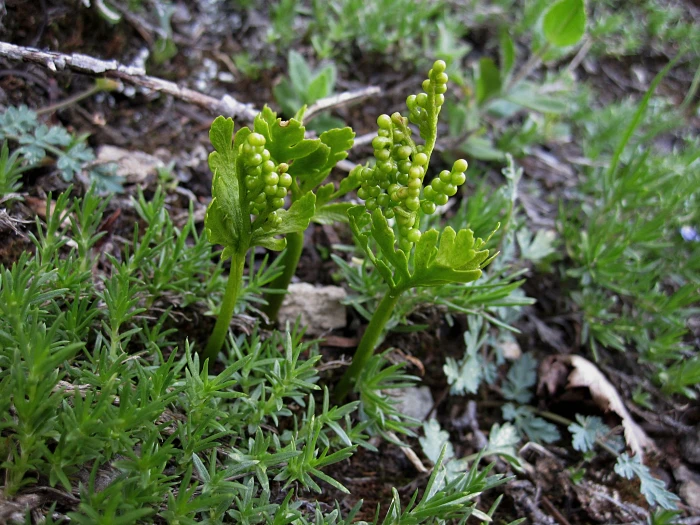Lanceolate Grapefern
(Botrychium lanceolatum)
Lanceolate Grapefern (Botrychium lanceolatum)
/
/

© Timothy McNitt
CC BY 4.0
Image By:
© Timothy McNitt
Recorded By:
Copyright:
CC BY 4.0
Copyright Notice:
Photo by: © Timothy McNitt | License Type: CC BY 4.0 | License URL: http://creativecommons.org/licenses/by/4.0/ | Uploader: frondsinhighplaces | Publisher: iNaturalist |























Estimated Native Range
Climate Requirements for Commack, New York
| This Plant | Your Site | Plant Suitability for Your Location | ||
|---|---|---|---|---|
| • Precipitation | 29" - 35" | 43" | Aquatic | Aquatic |
| • High Temp. | 58°F - 71°F | 82°F | Your summer temperatures are normal for this plant. | Excellent |
| • Low Temp. | -2°F - 18°F | 23°F | Your winter temperatures are normal for this plant | Excellent |
This plant may not grow well at your location - your precipitation is too high.
Summary
Botrychium lanceolatum, commonly known as Lanceolate Grapefern, is a perennial herbaceous plant that resembles a fern and is native to a variety of habitats including moist coniferous forests, wet meadows, and tundra in subarctic and temperate regions of the Northern Hemisphere. It is particularly found in areas like Greenland, as well as parts of North America and Eurasia. The plant typically grows to a height of 4-12 inches (10-30 cm) and features two distinct parts: a sterile frond that is lance-shaped and a fertile frond that bears spores.
Lanceolate Grapefern is appreciated for its delicate appearance and is often used in shaded or woodland gardens. It thrives in moist, well-drained soils with high organic content and prefers partial to full shade. While not widely cultivated, it can be a unique addition to native plant gardens or naturalized areas. This species is not known for significant problems with diseases or pests, but it requires a specific habitat to grow well, which can be a challenge in cultivation. It is not considered invasive and does not have aggressive roots.CC BY-SA 4.0
Lanceolate Grapefern is appreciated for its delicate appearance and is often used in shaded or woodland gardens. It thrives in moist, well-drained soils with high organic content and prefers partial to full shade. While not widely cultivated, it can be a unique addition to native plant gardens or naturalized areas. This species is not known for significant problems with diseases or pests, but it requires a specific habitat to grow well, which can be a challenge in cultivation. It is not considered invasive and does not have aggressive roots.CC BY-SA 4.0
Plant Description
- Plant Type: Fern
- Height: 0.5-1 feet
- Width: 0.5-1 feet
- Growth Rate: Moderate
- Flower Color: N/A
- Flowering Season: Non-Flowering
- Leaf Retention: Deciduous
Growth Requirements
- Sun: Part Shade, Full Shade
- Water: Medium
- Drainage: Medium, Slow
Common Uses
Low Maintenance, Rock Garden
Natural Habitat
Moist coniferous forests, wet meadows, and tundra in subarctic and temperate regions of the Northern Hemisphere
Other Names
Common Names: Lanceleaf Grapefern, Triangle Moonwort, Northern Grapefern
Scientific Names: Botrychium lanceolatum, Botrychium lanceolatum subsp. lanceolatum, Botrychium lanceolatum subsp. typicum, Botrychium lanceolatum var. lanceolatum, Botrychium lunaria var. lanceolatum, Botrychium manshuricum, Botrychium matricariifolium, Botrychium matricariifolium var. lanceolatum, Botrychium palmatum
GBIF Accepted Name: Botrychium lanceolatum